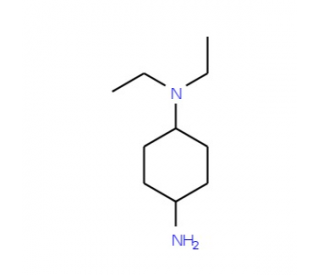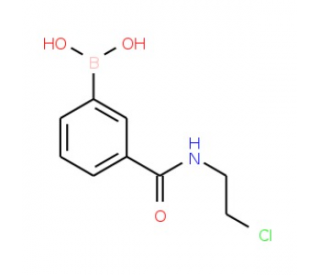详细说明
Species Reactivity
Human
Specificity
Detects human LILRB3/CD85a/ILT5 in direct ELISAs and Western blots. In direct ELISAs, no cross-reactivity with recombinant human (rh) ILT1, rhILT2, rhILT3, rhILT4, rhILT6, rhILT7 or rhILT11 is observed.
Source
Monoclonal Mouse IgG 2A Clone # 222821
Purification
Protein A or G purified from hybridoma culture supernatant
Immunogen
Mouse myeloma cell line NS0-derived recombinant human LILRB3/CD85a/ILT5
Gly24-Glu443
Accession # AAB68668Formulation
Lyophilized from a 0.2 μm filtered solution in PBS with Trehalose. *Small pack size (SP) is supplied as a 0.2 µm filtered solution in PBS.
Label
Unconjugated
Applications
Recommended
ConcentrationSample
Western Blot
1 µg/mL
Recombinant Human LILRB3/CD85a/ILT5 Fc Chimera (Catalog # )
Flow Cytometry
0.25 µg/10 6 cells
See below
CyTOF-ready
Ready to be labeled using established conjugation methods. No BSA or other carrier proteins that could interfere with conjugation.
Please Note: Optimal dilutions should be determined by each laboratory for each application. are available in the Technical Information section on our website.
Data Examples
Flow Cytometry | Detection of LILRB3/CD85a/ILT5 in Human PBMCs by Flow Cytometry. Human peripheral blood mononuclear cells (PBMCs) were stained with Mouse Anti-Human CD14 PE‑conjugated Monoclonal Antibody (Catalog # ) and either (A) Mouse Anti-Human LILRB3/CD85a/ILT5 Monoclonal Antibody (Catalog # MAB1806) or (B) Mouse IgG2A Isotype Control (Catalog # ) followed by Allophycocyanin-conjugated Anti-Mouse IgG Secondary Antibody (Catalog # ). |
Preparation and Storage
Reconstitution
Reconstitute at 0.5 mg/mL in sterile PBS.
Shipping
The product is shipped at ambient temperature. Upon receipt, store it immediately at the temperature recommended below. *Small pack size (SP) is shipped with polar packs. Upon receipt, store it immediately at -20 to -70 °C
Stability & Storage
Use a manual defrost freezer and avoid repeated freeze-thaw cycles.
12 months from date of receipt, -20 to -70 °C as supplied.
1 month, 2 to 8 °C under sterile conditions after reconstitution.
6 months, -20 to -70 °C under sterile conditions after reconstitution.
Background: LILRB3/CD85a/ILT5
Immunoglobulin-Like Transcript 5 (ILT5), also known as Leukocyte Immunoglobulin-Like Receptor subfamily B (LILRB3), leukocyte immunoglobulin-Like Receptor 3 (LIR3) and CD85a, is an Ig-like receptor family member that is involved in immune regulation. ILT5 belongs to subfamily B whose members have cytoplasmic tails that contain Immunoreceptor Tyrosine-based Inhibitory Motifs (ITIMs) that inhibit signaling events via phosphatase SHP-1. The counterpart to subfamily B is subfamily A, whose members qualify as activating receptors that lack ITIMs, but signal through association with FcR gamma. ILTs share structural homology and chromosomal localization with the KIR family of receptors (1, 2). Mature ILT5 is a highly polymorphic 85‑95 kDa glycoprotein that consists of a 420 amino acid (aa) extracellular domain (ECD) with four Ig-like domains, a 21 aa transmembrane segment, and a 167 aa cytoplasmic domain with three ITIMs (3, 4). Alternate splicing generates an isoform with a 17 aa insertion in the juxtamembrane ECD. In mouse and rat, the LILRB3 gene encodes the PIR-B protein which has six Ig-like domains. Rodent PIR-B and human ILT5 share 55% aa sequence identity within common regions of their ECDs. Both PIR-B and ILT5 are receptors for S. aureus, and activation of these receptors by bacteria influences the innate immune response triggered by TLRs (4). ILT5 is expressed on the surface of peripheral monocytes, neutrophils, eosinophils, basophils, and mast cell progenitors but not on mature mast cells (5‑7). On basophils, cross-linking of ILT5 to the activating receptors ILT1/LIR7 or Fc epsilon RI inhibits the release of Histamine, Leukotriene C4, and IL-4 (6). On osteoclast precursors, ILT5 ligation inhibits RANKL or M-CSF induced differentiation (8). ILT5 is down‑regulated on macrophages in rheumatoid arthritis synovial tissue following successful treatment with DMARD anti-rheumatic drugs (9).
References:
Brown, D. et al. (2004) Tissue Antigens 64:215.
Borges, L. and D. Cosman (2000) Cytokine Growth Factor Rev. 11:209.
SwissProt Accession # O75022.
Nakayama, M. et al. (2007) J. Immunol. 178:4250.
Tedla, N. et al. (2003) Proc. Natl. Acad. Sci. 100:1174.
Sloane, D.E. et al. (2004) Blood 104:2832.
Tedla, N. et al. (2008) J. Leukoc. Biol. 83:334.
Mori, Y. et al. (2008) J. Immunol. 181:4742.
Huynh, O.A. et al. (2007) Rheumatology 46:742.
Entrez Gene IDs:
11025 (Human)
Alternate Names:
CD85 antigen-like family member A; CD85a antigen; CD85a; HL9Immunoglobulin-like transcript 5; ILT5; ILT-5; ILT5CD85a; Leukocyte immunoglobulin-like receptor 3; leukocyte immunoglobulin-like receptor subfamily B member 3; leukocyte immunoglobulin-like receptor, subfamily B (with TM and ITIM domains); LILRB3; LIR3; LIR3CD85A; LIR-3MGC138403; member 3; Monocyte inhibitory receptor HL9; PIRB










 粤公网安备44196802000105号
粤公网安备44196802000105号